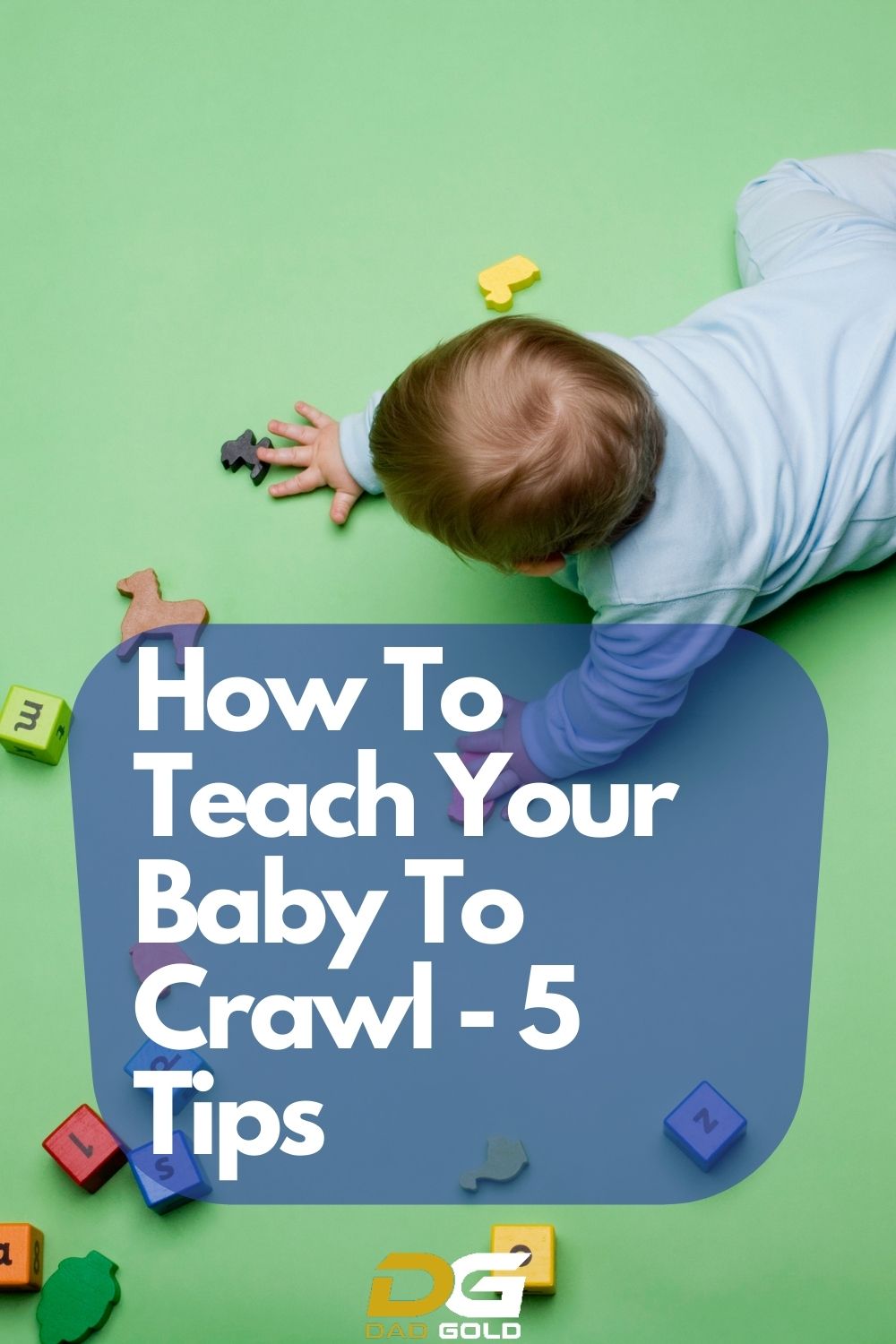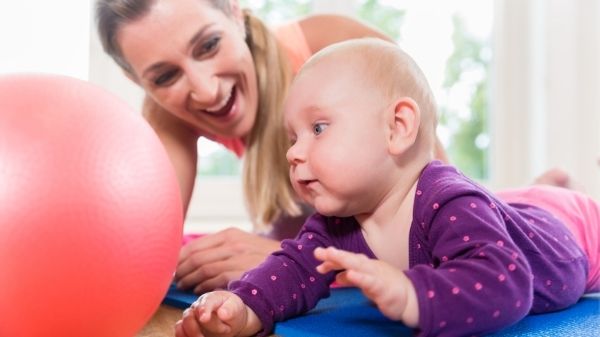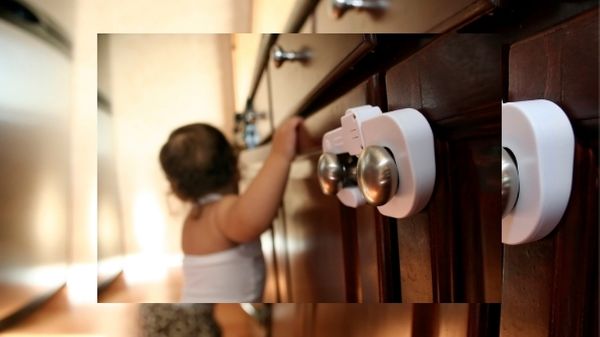Crawling is a big milestone in your little one’s life, and maybe you’re eagerly waiting for them to scoot across the floor so that they can start exploring their home on their own arms and legs.
Shouldn’t they start crawling already? Is there anything you can do to speed it up?
Maybe you’ve got an almost crawler, or maybe your baby’s a little behind than other kids of their age. So, if you’re wondering how to help them master the art of crawling or at least help them pick up the pace, this article is for you. I’ll tell you everything you need to know about how to get your baby to crawl.
Even though your child is yet to begin, your mind is probably crawling with questions. So, let’s get to it without wasting any time.

At what age should babies begin to crawl?
You’re most likely to see your little one learning to crawl anywhere from 6 to 10 months of age. Before settling on the classic crawl, most babies will try a variety of crawling styles.
- Commando- babies try to move forward using their elbows and forearm while lying flat on their tummy.
- Crab- while doing this one, babies tend to bend one knee and extend the opposite leg.
- Roll- instead of using their tiny hands and feet, some babies prefer to roll around to reach their destination.
However, remember that not all babies start crawling as soon as they reach 6 months of age. If your baby weighs a little more than what’s typical for their age or was born immaturely, they might take a little longer than others to learn it.
Many babies skip crawling altogether. They move onto something more exciting as standing or walking. So, don’t lose sleep over it if your baby has decided to use your help to get around for a few more days or skip crawling altogether.
-

Bold Male Pride – Baseball Trucker Cap Celebrating Masculinity
£18.00 Select options This product has multiple variants. The options may be chosen on the product page -

Dad Bod Appreciation Gift Mug
£14.00 Add to cart -

Dad Bod, Bad Jokes Structured Baseball Cap
£22.00 Select options This product has multiple variants. The options may be chosen on the product page
While it’s considered to be really important for developing your baby’s coordination, balance, and motor skills, it’s wonderful if they start to crawl a little later than others or don’t do it at all.
Can you teach your baby to crawl?

You can’t wait for your baby to start crawling. So, you’d do anything in your power to get them moving as soon as you can. But will your baby learn it by themselves, or do you have to teach them? Well, you sure can support and encourage them, but they’ll learn it by themselves and start whenever they’re ready.
Meanwhile, what you can do is look for the signs if they’re ready to crawl. See if they
- mastered supporting their head,
- can easily roll over,
- can sit up without your support
- drag themselves around the floor
- get on all fours and keep rocking back and forth
- spend a lot of time on their hands and knees and try to keep moving forward.
For most babies learning to crawl is a part of their growth and development that comes naturally. Others might need a little push which brings me to my next point.
How To Teach Your Baby To Crawl – 5 Tips
I’m going to tell you how you can teach your baby to crawl when they’re more than 6 months old and struggling to stay on their hands and knees. Let’s see how to encourage crawling to help your baby learn the routine.
Give Them Enough Tummy Time

Your baby needs to learn how to hold their little bodies up and maintain balance using the muscle strength in their arms, neck, back, and shoulders before they learn to crawl.
Having a designated tummy time starting from birth will help them develop muscle strength in their upper body.
Put them on a blanket or a boppy pillow and start with 3-5 minutes of tummy time a few times a day. This will help them build core strength and develop muscles in their arms and legs to help them start crawling.
Once their muscles grow, and they start to get comfortable on their tummy, gradually increase the tummy time.
Show Them How it’s Done.
Your baby might need some guidance before they learn to move independently. Get down on the floor and scoot around with them. If your friends have got kids who just started crawling, invite them over so that your baby can see them doing it and imitate it.
You can also get your baby used to the idea of crawling by lifting their lower body in the air, which will make them place their hands on the floor to support their body weight. Use a couch cushion or pillow and make them lie on their stomach if you don’t have a foam roller or bolster.
Make it Interesting

Have you thought of making an obstacle course or buying a play tunnel? It can be a fun way to encourage your baby to start crawling. You might have to be the first crawler to show them how it works. Then place their favorite toys at a short distance and motivate them to move forward.
It doesn’t have to be a new toy. It can be anything your child finds visually stimulating. Make them get around things if you don’t have the time for an obstacle course or play tunnel. As long as you’re giving them a goal to achieve and make it interesting enough for them, it’ll work.
You can always place a mirror in front of them, and they’ll be intrigued to move towards their reflection.
Limit their Time in Baby Carriers and walkers
If your baby’s spending too much time in their walkers or bouncers instead of playing on the floor, it might slow down their learning process since they don’t get to practice crawling as much. Also, if you or their elder siblings carry them around all the time, they’d have no motivation to learn how to crawl.
To provide them with the best learning experience, make sure your baby gets enough time and space to roam/roll around and explore. Use the carriers and walkers only when it’s necessary. Dress them in full sleeves and comfortable pants to protect their skin and allow them to move with less friction.
But make sure their clothes aren’t too tight to restrict their mobility. Please give them a little push whenever necessary, and keep showing enthusiasm to make this a great experience for your child.
Make Sure Your Home’s child-proofed

To give your baby the perfect space to crawl around, you need to make sure you’ve child-proofed your house properly.
If there’s any potential hazard at your little one’s level, get it out of their way to make your home safe for their crawling adventures. Having a baby crawling around in an unsafe area is dangerous.
Take care of all the electrical outlets, sharp objects, and anything that might be dangerous. When they learn to crawl, it’s normal for them to touch anything and everything that looks shiny or sparkly.
So, child-proof your house before they begin moving around on their own to prevent any injuries.
If your house is not child-proof, then you could be nervous about letting your baby crawl, which will be picked up by your little one and will slow the crawling progress.
Conclusion
It’s such an amazing experience when your baby starts crawling for the first time. To enjoy it to the fullest, don’t put a timeline on it.
However, talk to their pediatrician if they don’t show any signs of movement or use only one side of their body to move around.
Having your baby crawling around your home will keep you on your toes, so you should always be on hand to make sure they don’t get into trouble!
Good luck!


